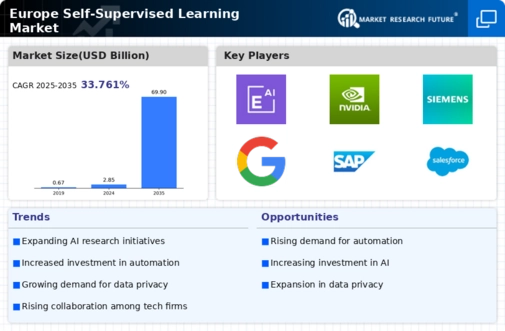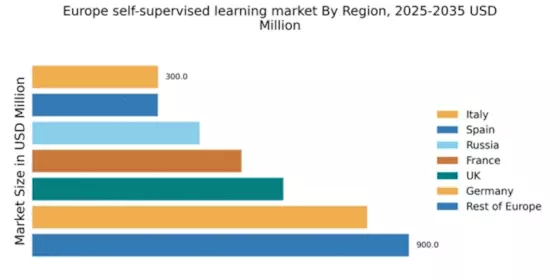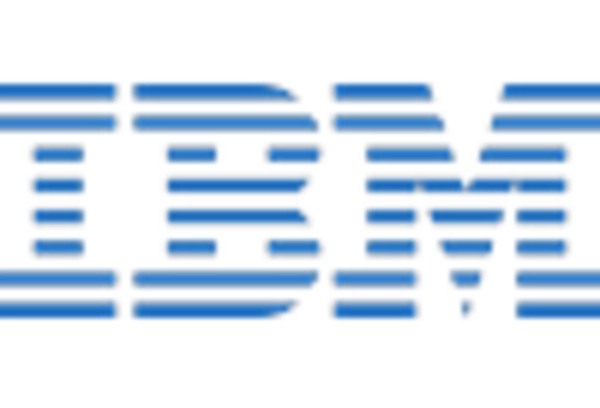Advancements in AI Research
The self supervised-learning market in Europe is significantly influenced by ongoing advancements in artificial intelligence research. European research institutions and universities are at the forefront of developing innovative algorithms and methodologies that enhance the capabilities of self supervised-learning. For instance, breakthroughs in neural network architectures and optimization techniques are enabling more efficient processing of unlabeled data. This research-driven approach is expected to attract substantial funding, with estimates suggesting that AI research funding in Europe could reach €20 billion by 2027. As a result, the self supervised-learning market is likely to expand, driven by the continuous evolution of AI technologies and their applications in various domains.
Rising Demand for Automation
The self supervised-learning market in Europe is experiencing a notable surge in demand for automation across various sectors. Industries such as manufacturing, finance, and healthcare are increasingly adopting self supervised-learning techniques to enhance operational efficiency and reduce costs. According to recent estimates, the automation market in Europe is projected to grow at a CAGR of approximately 15% over the next five years. This growth is likely to drive investments in self supervised-learning technologies, as organizations seek to leverage vast amounts of unlabeled data for training models. Consequently, the self supervised-learning market is poised to benefit from this trend, as companies aim to streamline processes and improve decision-making through advanced machine learning capabilities.
Expansion of Cloud Computing Services
The self supervised-learning market is also benefiting from the rapid expansion of cloud computing services across Europe. As organizations increasingly migrate their operations to the cloud, the demand for scalable and flexible machine learning solutions is rising. Cloud platforms provide the necessary infrastructure for deploying self supervised-learning models, enabling businesses to process large datasets efficiently. Recent reports indicate that the cloud computing market in Europe is expected to grow by over 20% annually, creating a favorable environment for the self supervised-learning market. This trend suggests that companies will likely invest in self supervised-learning technologies to leverage cloud capabilities, enhancing their data processing and analytical capabilities.
Growing Need for Data Privacy Compliance
In the context of the self supervised-learning market, the increasing emphasis on data privacy compliance is a critical driver. European regulations, such as the General Data Protection Regulation (GDPR), mandate strict guidelines for data usage and processing. Organizations are compelled to adopt self supervised-learning techniques that minimize the reliance on labeled data, thereby enhancing privacy and compliance. This shift is likely to lead to a greater adoption of self supervised-learning solutions, as companies seek to align their data practices with regulatory requirements. The market for privacy-centric AI solutions is projected to grow, potentially reaching €10 billion by 2026, further propelling the self supervised-learning market in Europe.
Increased Focus on Industry-Specific Applications
The self supervised-learning market is witnessing a growing focus on industry-specific applications, as organizations seek tailored solutions to address unique challenges. Sectors such as healthcare, finance, and retail are increasingly exploring self supervised-learning techniques to derive insights from vast amounts of unlabeled data. For example, in healthcare, self supervised-learning is being utilized to improve diagnostic accuracy and patient outcomes. This trend is likely to drive the development of specialized self supervised-learning models, catering to the specific needs of different industries. As a result, the self supervised-learning market in Europe is expected to expand, with companies investing in customized solutions that enhance their competitive edge.


















Leave a Comment